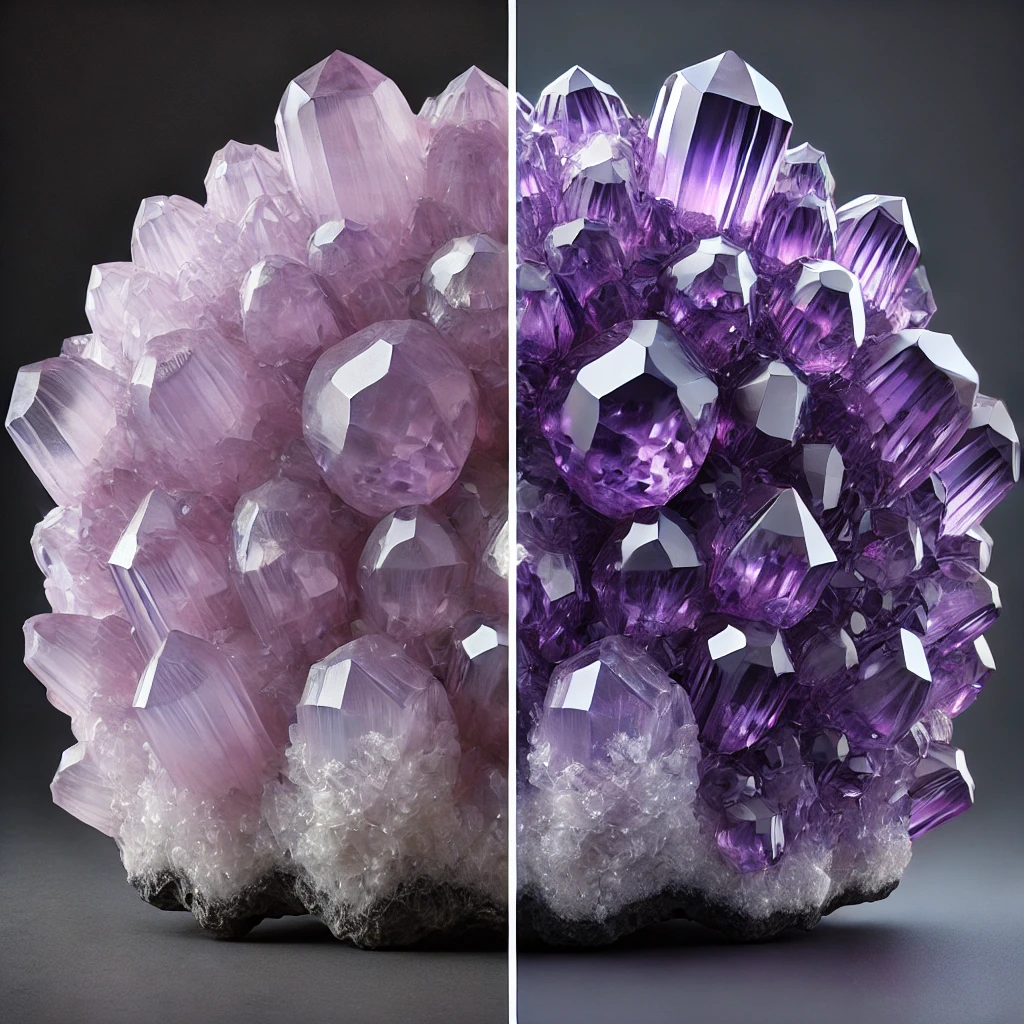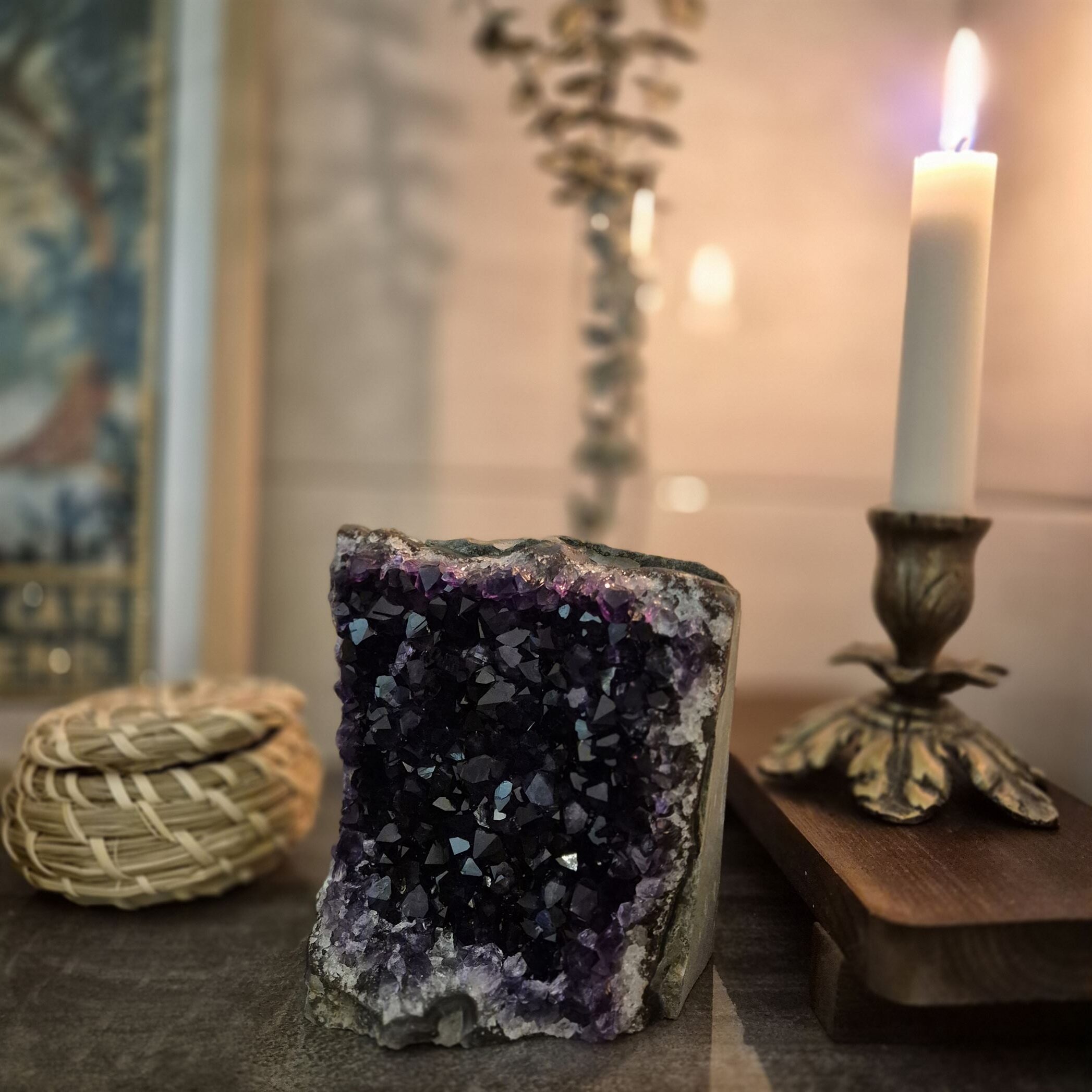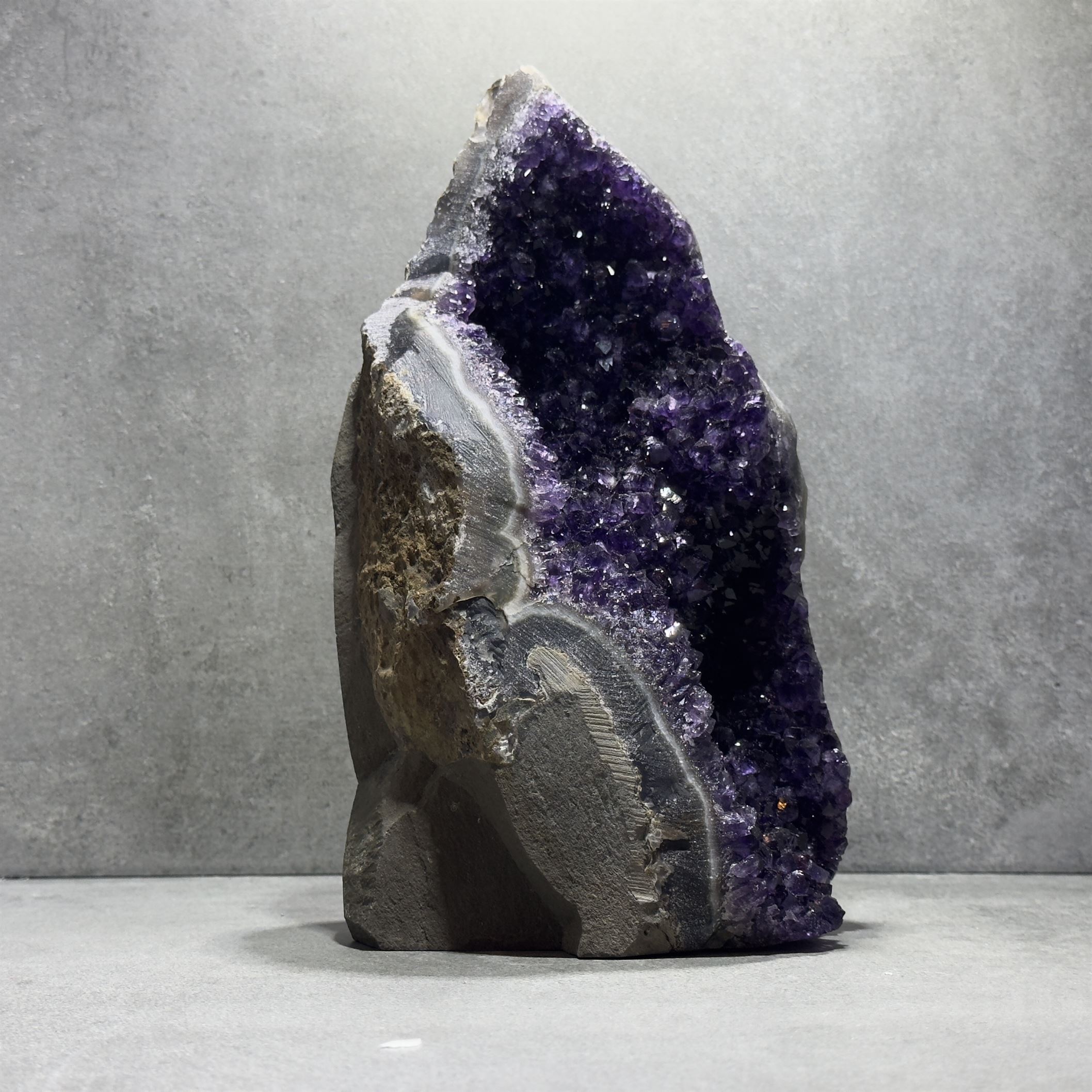Amethyst - How to assess quality and grading

What is an amethyst and how do its properties affect quality?
Amethysts are a type of quartz that gets its unique color from iron impurities exposed to natural radiation. The color can range from light lavender to deep purple, which affects the overall quality and value of the stone. Other factors such as clarity, cut and size also play a crucial role.
Amethysts are popular not only for their beautiful purple hues, but also for their association with spiritual purification and healing. When considering buying an amethyst, it is important to understand how its quality is judged. By knowing the different characteristics and gradations of amethysts, you can make a more informed purchase. In this guide, we explore how amethysts are graded and the factors that influence their value.
The four main factors for grading amethysts
To properly grade an amethyst, four main factors are considered: color, clarity, cut and size. Each aspect contributes to the overall beauty and value of the stone.
The importance of color in assessing the quality of amethyst
The color is the most crucial factor in grading amethysts. The deeper and more even the purple color is, the higher the stone is valued.
- A class (highest quality): Deep, even purple color with subtle undertones, often from Uruguay.
- B class: Rich purple color, but slightly less intense than A class.
- C and D class: Lighter purple or lavender color, with lower commercial value.

The role of clarity in grading amethysts
Clarity refers to how free a stone is from inclusions and defects. A high-quality amethyst should be "Eye-Clean," without visible inclusions.
- Eye-Clean ametister: Has no visible defects and has the highest value.
- Amethysts with inclusions: Lower quality, where defects can affect the appearance and luster of the stone.
How grinding affects the luster of amethyst
The cut of an amethyst affects the way light reflects through the stone, bringing out its natural color and clarity.
- Perfect grinding: High quality amethysts with precise proportions and polished surfaces.
- Less perfect grinding: Attractive but lacking the maximum symmetry.
The impact of size on the value of amethyst
Larger amethysts are often considered more valuable, but size is not always the most important factor. A smaller stone with perfect color and clarity may be more valuable than a larger stone with defects.

Summary - What to consider when choosing an amethyst
When choosing an amethyst, think about what is most important to you - color, clarity, cut or size. If you're looking for an amethyst with maximum color intensity and clarity, you should aim for A-grade stones, while B-grade offers an affordable option that is still beautiful in jewelry.
The characteristics of amethysts directly affect their value and beauty, and understanding these factors will help you make a better choice. Whether you are interested in an amethyst for its aesthetic or spiritual qualities, it is important to choose the right quality for your needs.